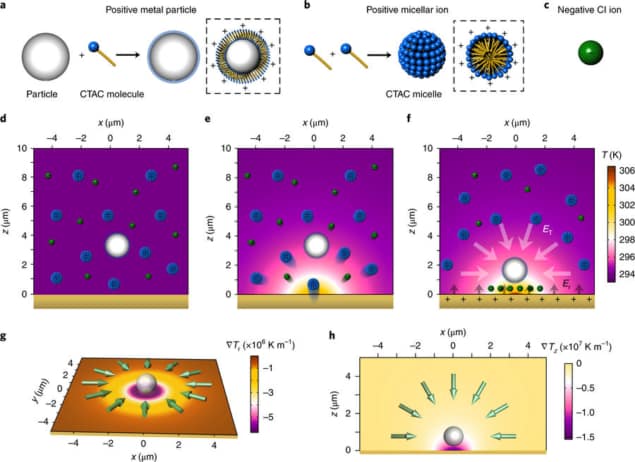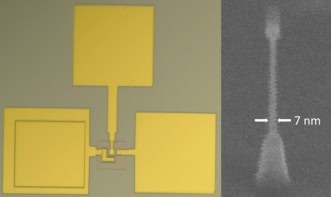
Optical traps provide a valuable non-contact approach for manipulating nanostructures for biological, photonic and material science studies. However heating effects have placed constraints on what laser wavelengths and intensities traps can use, as well as the systems they can manipulate. Researchers in the US, Turkey and Spain have now turned these heating effects to their advantage by demonstrating the versatile manipulation of nanostructures using opto-thermoelectric effects.
Nuisance heating is a recurring theme in nanotechnology where resonances and low-dimensional features can exacerbate milder macroscale effects. Optical tweezers harness the tiny forces exerted by incident light to trap and manipulate nanoparticles, but the inevitable laser heating leads to radiation forces that reduce the trap stability. The situation further deteriorates for trapped metal nanoparticles when the incident light overlaps with a plasmonic resonance, whereby electrons move in response to light collectively, causing enhancements to local fields by several orders of magnitude. To bring these errant heating effects into line Yuebing Zheng and colleagues exploited the different responses of different particles to a thermal gradient.
How it works
Zheng and colleagues demonstrated their thermo-electric nanotweezers on plasmonic silver and gold nanoparticles. They dispersed the particles in a solution of the cationic surfactant, cetyltrimethylammonium chloride (CTAC), so that a positively charged molecular double layer formed at the particle surface. They also coated a porous gold film – which has a plasmonic response at infrared wavelengths – in CTAC and used it as the substrate.
Free CTAC molecules form micellar cations in solution, that were countered by chroide anions. With no incident light the large cations and chloride ions were equally dispersed. When the researchers shone a laser onto the thermoplasmonic substrate, a thermal gradient developed. Both the micellar cations and chloride ions will migrate from hot to cold regions, but the higher molecular mass of the micellar cations leads to an inbalance in the cation and anion distribution causing an electric field in the direction of the nanoparticle.
What it works on
Measurements revealed that the stiffness of the trap exceeded that of optical tweezers by two to three orders of magnitude. Tuning the CTAC concentration further improved the trap stiffness. As well as nanospheres they tested the approach on nanotriangles as well.
They were also able to demonstrate the opto-thermoelectric manipulation of multiple particles into a ring or a triangular shape using a digital micromirror device, a tool that can pixelate incident light switching it on or off for each pixel.
In their report the researchers conclude that “with its low-power and non-invasive operation, diverse options in the trapping wavelength, and generality in size, shape and composition of the trapped nanoparticles, OTENT [opto-thermoelectric nanotweezers] will become a powerful tool in colloid science, life sciences and nanotechnology.”
Full details are reported in Nature Photonics.



